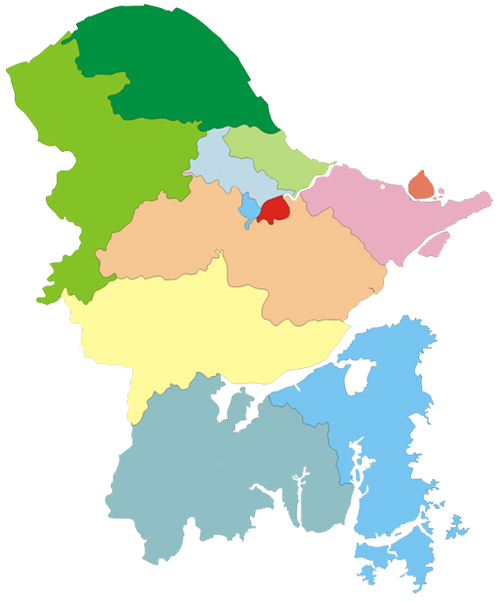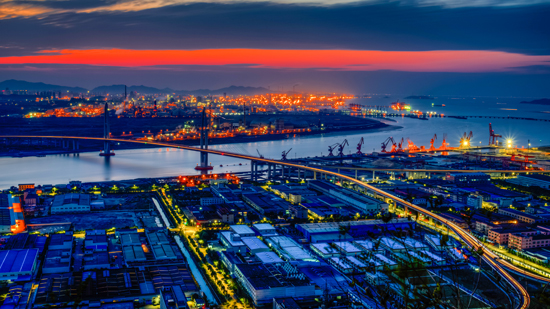Ningbo

Location
Ningbo, a city in Zhejiang province, lies in the middle of China's eastern coastline and south wing of the Yangtze River Delta. Zhoushan Islands serves as a natural defense on the city's east side. The islands neighbors Hangzhou Bay in the north, Shengzhou, Xinchang and Shangyu of Shaoxing in the west and Sanmen Bay in south.
Administrative Divisions
Ningbo today has direct jurisdiction over six districts (Haishu, Jiangbei, Zhenhai, Beilun and Yinzhou, Fenghua), two county-level cities (Cixi and Yuyao) and two counties (Ninghai and Xiangshan), involving 77 towns and 11 villages.

Area
The city covers a land area of about 9,714 square kilometers and a sea area of about 8,232.9 square kilometers. It has a coastline running about 1,594.4 kilometers, accounting for 24 percent of the whole coastline of Zhejiang. The city has an urban area of 2,456 square kilometers, with 614 scattered islands covering a total area of 262.9 square kilometers.
Population
5,969,000 registered residents (2017)
8,005,000 permanent residents (2017)
Climate
Ningbo enjoys northern subtropics monsoon climate, with annual average temperature hovering around 16.4 C and annual precipitation running up to 1,480 mm. It is occasionally subjected to drought, typhoon, rainstorm, hailstone, frost and cold waves.
Natural Resources
The city has Sanmen Bay, Hangzhou Bay and Xiangshan Port linking to the Qiantang and Yongjiang rivers, which provide abundant nourishment for neritic organisms.
The Chunxiao oil and gas field sits in the Xihu Trough of East China Sea and about 350 kilometers southeast of Ningbo. It's known as the East Asia's "Persian Gulf", and, covers a total area of 22,000 square kilometers. The field is believed to have 70 billion cubic meters in oil and gas reserves.



 Print
Print Mail
Mail